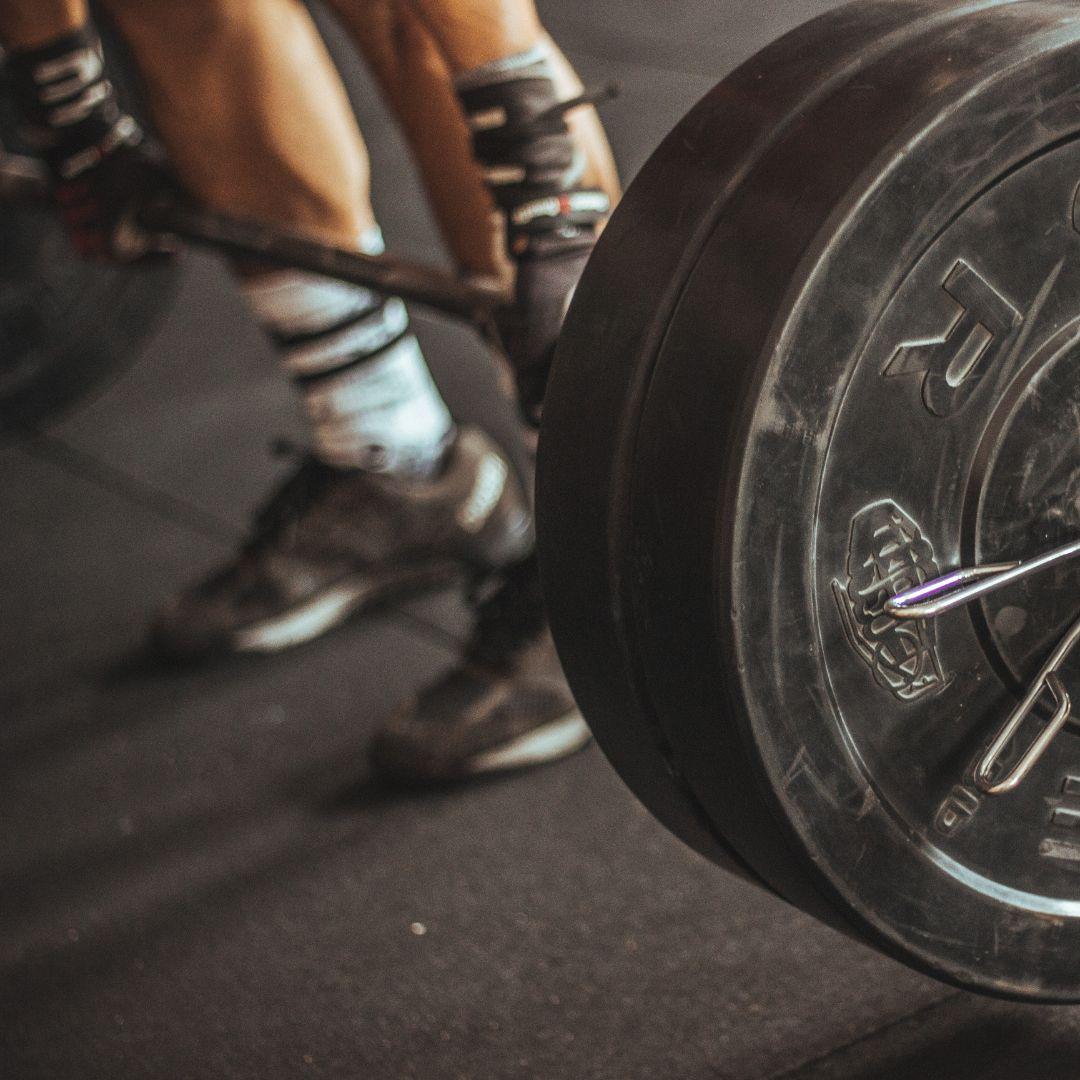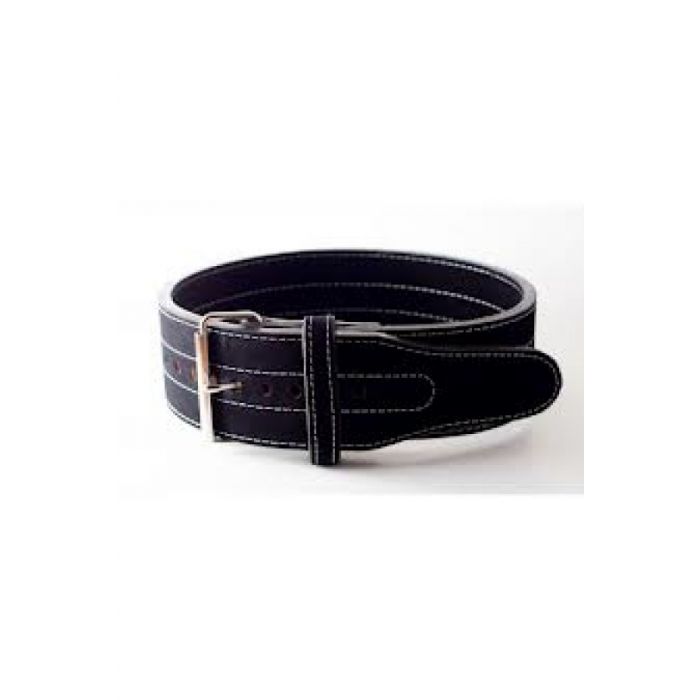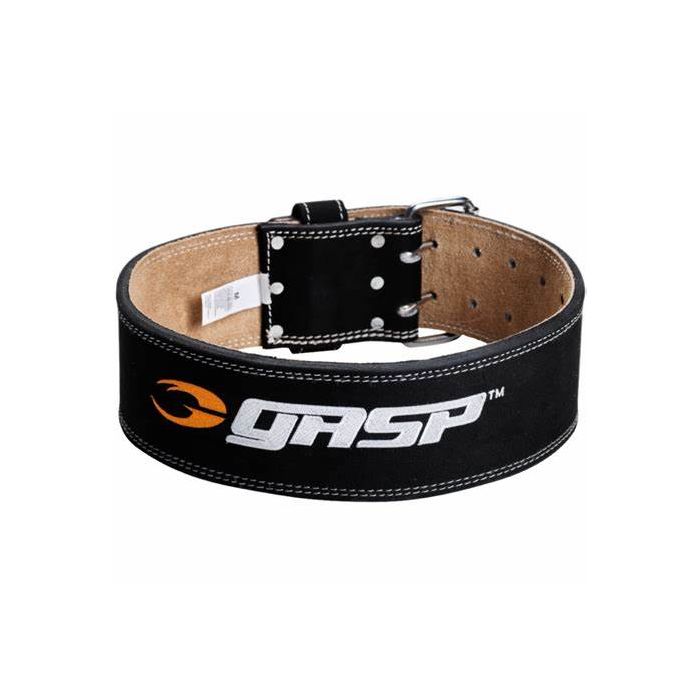We use cookies to make your experience better. We and our advertising partners collect data and use cookies for ad personalization and measurement. To comply with the new e-Privacy directive, we need to ask for your consent to set the cookies.Learn how we collect and use data Learn more.
Free Delivery on orders over £50 Free Click & Collect
Single or Double Prong Lifting Belt
When it comes to serious weightlifting, having the right equipment is essential to ensure safety and performance. One piece of equipment that often comes into question is the lifting belt. Designed to provide support to the lower back and core during heavy lifts, lifting belts can be a game-changer for many weightlifters. In this blog, we'll explore the differences between single and double prong lifting belts, their advantages, and how to choose the right one for your needs.
What is a Lifting Belt?
A lifting belt is a sturdy and wide belt typically made from leather or synthetic materials. It is worn around the waist and is designed to support the abdominal wall and lower back during heavy lifting exercises like squats, deadlifts, and overhead presses. By providing external support, lifting belts help reduce the pressure on the spine, making it easier to lift heavier weights safely.
Purpose of Lifting Belts
The primary purpose of lifting belts is to increase intra-abdominal pressure. When you take a deep breath and brace your core against the belt, it creates a stable core, allowing you to lift more weight effectively. Additionally, lifting belts can enhance proprioception, helping lifters maintain proper form and technique throughout the lift.
Types of Prong Lifting Belts
There are two main types of lifting belts: single prong and double prong lifting belts.
1. Single Prong Lifting Belt
The single prong lifting belt features a single metal prong to secure the belt in place. This design offers convenience as it is easier to put on and take off, especially when you're working out alone. The single prong buckle allows for quick adjustments, making it suitable for workouts that involve different exercises and lifting positions.
Advantages of Single Prong Lifting Belt
- Easy and quick to fasten and unfasten.
- Convenient for solo lifters.
- Ideal for workouts with varying exercises.
2. Double Prong Lifting Belt
The double prong lifting belt, as the name suggests, has two metal prongs that provide extra stability and support. Although it may take slightly more time to put on and adjust, the double prong design offers a secure fit and distributes pressure more evenly around the waist.
Advantages of Double Prong Lifting Belt
- Provides enhanced stability and support.
- Even pressure distribution.
- Suitable for heavy lifting and maximal lifts.
Factors to Consider When Choosing a Lifting Belt
Selecting the right lifting belt is crucial for optimal performance and safety. Here are some factors to consider when making your decision:
1. Belt Width
The width of the lifting belt affects the level of support it provides. Generally, wider belts offer more support to the lower back and core, making them ideal for heavy lifting. Narrower belts may offer more flexibility but may not provide sufficient support during maximal lifts.
2. Belt Material
Lifting belts are commonly made from leather or synthetic materials. Leather belts are durable and can mold to the shape of your body over time, providing a custom fit. On the other hand, synthetic belts are often more affordable and may have added features like moisture-wicking properties.
3. Buckle Type
As discussed earlier, lifting belts come with single or double prong buckles. Consider your preference for convenience and stability when choosing between the two.
4. Sizing and Fit
Getting the right size and fit is essential for the effectiveness of the lifting belt. A properly sized belt should fit snugly around your waist without being overly tight or too loose.
How to Use a Lifting Belt Properly
To get the most out of your lifting belt, follow these steps for proper usage:
- Place the belt around your waist, just above your hip bones.
- Take a deep breath and brace your core against the belt.
- Ensure the belt is tight enough to provide support but not restricting your breathing.
- Maintain proper form throughout your lifts and engage your core muscles.
Safety Precautions
While lifting belts can be beneficial, it's essential to use them correctly and follow safety guidelines:
- Lifting belts are not a substitute for proper form and technique. Ensure you are lifting with correct mechanics to prevent injuries.
- Do not rely solely on the belt. Train your core and back muscles to be strong and supportive on their own.
- Avoid wearing the belt too tightly, as it may restrict your breathing and lead to increased blood pressure.
Maintenance and Care
To prolong the life of your lifting belt and maintain its effectiveness, follow these maintenance tips:
- Clean the belt regularly using a mild soap and water.
- Avoid exposing the belt to extreme temperatures or direct sunlight.
- Check the belt for any signs of wear or damage, and replace it if necessary.
Comparison: Single Prong vs. Double Prong Lifting Belt
Both single prong and double prong lifting belts have their advantages, and the choice ultimately depends on individual preferences and needs. Single prong belts offer convenience, whereas double prong belts provide enhanced stability.
The best lifting belt for you depends on your lifting goals, preferences, and body type. Consider your workout routine and needs when making a decision.
Recommended Prong Lifting Belts
Here are our personal favourite prong lifting belts available in the UK.
Single Prong Lifting Belts
Inzer Forever Buckle Belt - 10mm £135.00
Inzer Forever Belt 10mm a powerful single prong belt that conforms to your body shape faster, delivering enhanced comfort. It's an excellent choice for lifting applications where a thicker belt isn't required. Uncompromising quality and feature an exclusive Reinforced Leather component that not only enhances the breaking-in process but also adapts to your unique form, surpassing the performance of all other belts.
Double Prong Lifting Belts
GASP Training Belt £69.98
Urban Gym Wear Strong Leather Belt £40.00
Introducing the Urban Gym Wear Strong Leather Belt - a 4-inch belt crafted with 10mm thick genuine leather, ensuring its remarkable strength. The closure system features a double prong fastening, securing the belt with a reliable steel buckle. A highly functional and affordable prong belt for lifting.
Conclusion
In conclusion, lifting belts are valuable tools for weightlifters aiming to improve their performance and safety. Whether you choose a single prong or double prong lifting belt, remember that proper form and technique remain crucial for injury prevention. Take the time to select the right belt for your needs and use it as a supplement to your training, not a crutch. Happy lifting!
At Nutrition Now, we are an independent retailer for high quality prong belts for lifting from amazing brands in the UK and Ireland. Make sure to check out our complete selection online!
FAQs
- What is the main purpose of a lifting belt? The primary purpose of a lifting belt is to provide support to the lower back and core during heavy weightlifting exercises, reducing the pressure on the spine and enhancing stability.
- Are lifting belts suitable for all types of weightlifting exercises? Lifting belts are most commonly used for compound exercises like squats, deadlifts, and overhead presses. They may not be necessary for isolation exercises or activities with lower weight loads.
- Is it essential to wear a lifting belt during weightlifting? No, lifting belts are not mandatory. However, they can be beneficial for individuals lifting heavy weights or those who require extra support during their lifts.
- How do I determine the correct size of a lifting belt? To find the right size, measure your waist at the point just above your hip bones. Use this measurement to select a belt that fits snugly but doesn't restrict your breathing.
- Can lifting belts prevent injuries? Lifting belts can help reduce the risk of certain injuries by providing support to the core and back. However, they are not a guarantee against injuries, and proper form and technique are still crucial.
- Should I choose a single prong or double prong lifting belt? The choice between single and double prong belts depends on your preferences. Single prong belts are easier to fasten, while double prong belts offer enhanced stability.
- How tight should I wear the lifting belt? The lifting belt should be tight enough to provide support but not so tight that it restricts your breathing or causes discomfort. Find a balance that offers stability without impeding movement.




